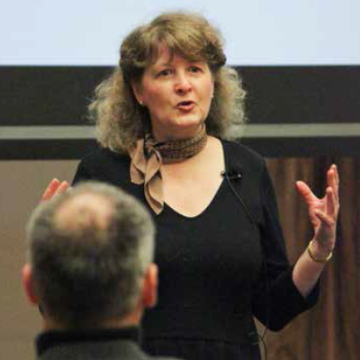
What Good Is God?
2013-2014 Bannan Institute Photo Essay
In an age in which religion is associated as much with violence as benevolence, where propositions of faith are often framed as oppositional to modern science, and one-fifth of all Americans self-identify as “none of the above” with regard to religion, the 2013-2014 Bannan Institute sought to publicly engage one the most significant questions of our time through a series of lectures and facilitated dialogues with scientists, philosophers, literary scholars, engineers, theologians, poets, artists, and educators. We began in the fall quarter with a focus on God and culture, exploring the significance of secular and religious goods within civil society and then moved to engage the vexing and expansive intersections among contemporary scientific, technological, and religious paradigms under the theme of God and reality in the winter quarter. In the spring quarter, we concluded by considering the God-question within the life of a university, hosting a series of lectures and events around the role of religion within higher education.
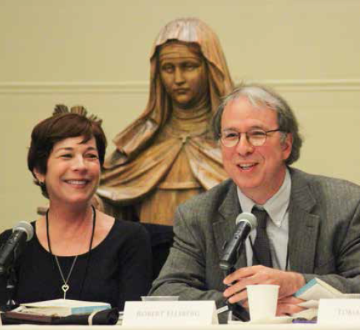 |
1. In a panel entitled “Keeping the Faith: Catholic Writers on Heroes of Conscience,” author and editor of Orbis books Robert Ellsberg reflects with author Bo Caldwell on their mutual contributions to Not Less Than Everything: Catholic Writers on Heroes of Conscience from Joan of Arc to Oscar Romero, ed. Catherine Wolff. This Fall 2013 Bannan Institute panel event also included the reflections of contributors Ron Hansen and Tobias Wolff. |
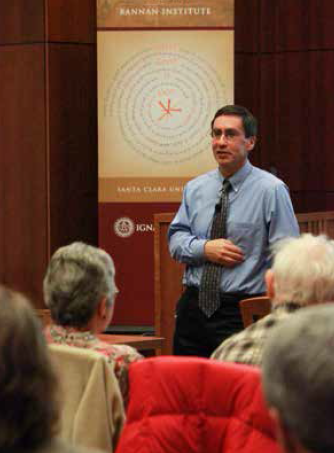 |
2. The fall quarter of the Bannan Institute focused on the theme “God and Culture: Secular and Religious Goods in Civil Society.” Professor William Cavanaugh, director of the Center for World Catholicism and Intercultural Theology at DePaul University, offered a thought-provoking lecture on “Violent Religion or the Sacred State? Violence, Idolatry, and Religion in Civil Society.” |
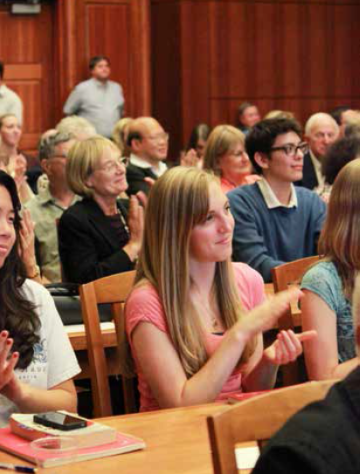 |
3. More than 2,000 students, faculty, staff, alumni, and community members participated in the Bannan Institute offerings throughout the year, bringing a diverse range of perspectives and questions to deepen and enrich the dialogue. |
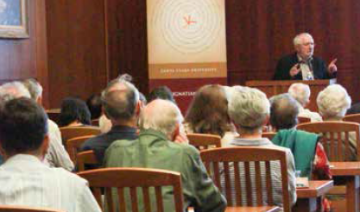 |
4. Distinguished professor, cultural theorist, and literary critic Terry Eagelton offered a bold lecture entitled “Why Is God for Christians Good for Nothing?” An excerpt from this lecture is included in the current issue of explore, as well as responses from a Santa Clara University faculty member and a student. |
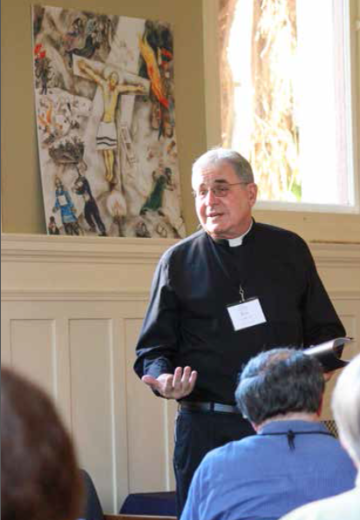 |
5. Fr. Robert Scholla, S.J., Bannan Faculty Fellow, facilitated an Ignatian Day of Prayer and Reflection around the theme: “Why Do We Suffer?” as part of the Fall 2013 Bannan Institute offerings. |
 |
6. In the winter quarter, the Bannan Institute focused on the theme of “God and Reality: Emergent Scientific, Technological, and Religious Paradigms.” Noreen Herzfeld of Saint John’s University and the College of St. Benedict delivered a lecture on “Outsourcing Memory: Google, Memory, and Forgiveness.” |
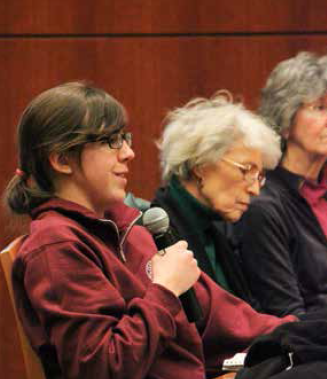 |
7. Each quarter, Santa Clara University faculty are invited to collaboratively plan the Bannan Institute lecture series and associate their related courses with pertinent lectures. Here, a student in Professor Oliver Putz’s Religious Studies course Religion and Science: Friends or Foes? asks a question at a Winter 2014 lecture linked with his course. |
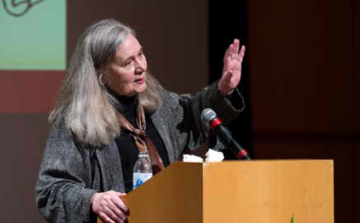 |
8. A major highlight within this year’s Bannan Institute was the visit of Pulitzer Prize-winning author Marilynne Robinson. Robinson delivered the 2014 Santa Clara Lecture, “Grace in Shakespeare,” an excerpt of which is included in this issue of explore. |
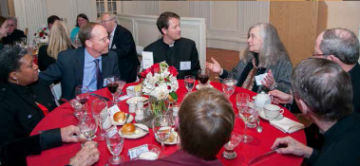 |
9. During Robinson’s time at Santa Clara University, she was able to join faculty, staff, students, and administrators in lively conversations over lunch and dinner, as well as share in a class visit with undergraduate students studying her celebrated novel, Gilead. |
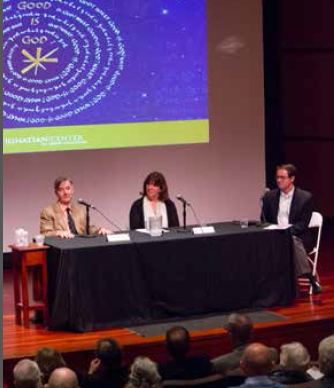 |
10. In Winter 2014, the Bannan Institute featured a two-day symposium on the topic “Science and Seeking—Rethinking the God-Question in the Lab, Cosmos, and Classroom,” attracting nearly 200 attendees. The symposium was designed in partnership with Professor David Pleins of the Department of Religious Studies through the support of a 2013-2014 Bannan Grant award. |
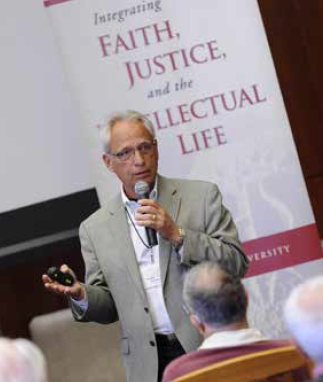 |
11. The Bannan Institute focused in the spring quarter on the domain of higher education, exploring the question “What good is God within the life of a university?” Jake Jacobsen (pictured here) and Rhonda Jacobsen of Messiah College offered a lecture entitled: “Containment or Engagement? The Shifting Role of Religion in Higher Education,” with Julie Reuben of Harvard University’s Graduate School of Education. |
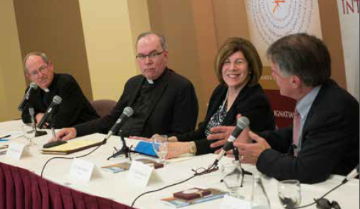 |
12. In collaboration with Santa Clara University’s Jesuit Community, the Bannan Institute hosted four presidents of Catholic universities, including SCU President Michael Engh, S.J., to reflect together on the status of Catholic higher education today. |
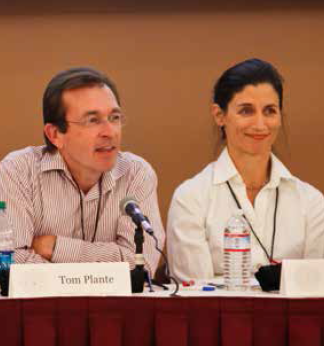 |
13. Faculty from the Philosophy, Theatre and Dance, Psychology, and English departments contributed to a Spring 2014 panel entitled: “What Good Is God Outside of Religious Studies? Interdisciplinary Reflections on the God-Question.” Pictured here: Augustin Cardinal Bea, S.J. University Professor Thomas Plante and Senior Lecturer Kristin Kusanovich. |
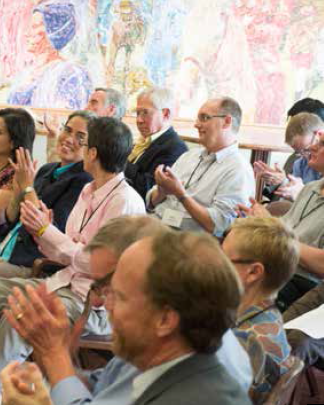 |
14. Inspired by Fr. Louis I. Bannan, S.J. (1914-1998), each yearlong Bannan Institute seeks to address matters of significance within the Jesuit, Catholic intellectual tradition, foster an ethic of dialogue among persons of diverse religious and philosophical commitments, and facilitate opportunities for interdisciplinary exchange across the 14 University and broader community. |